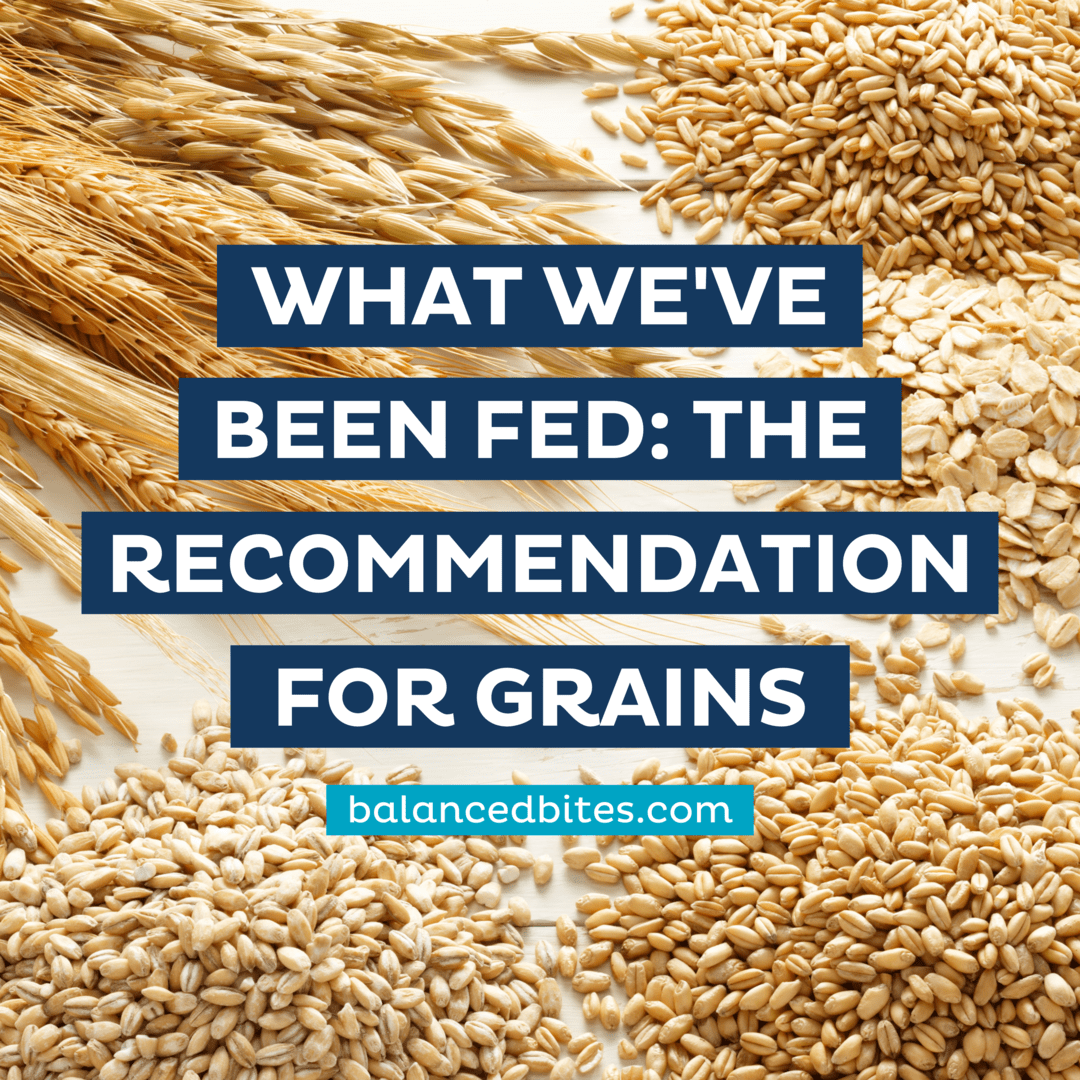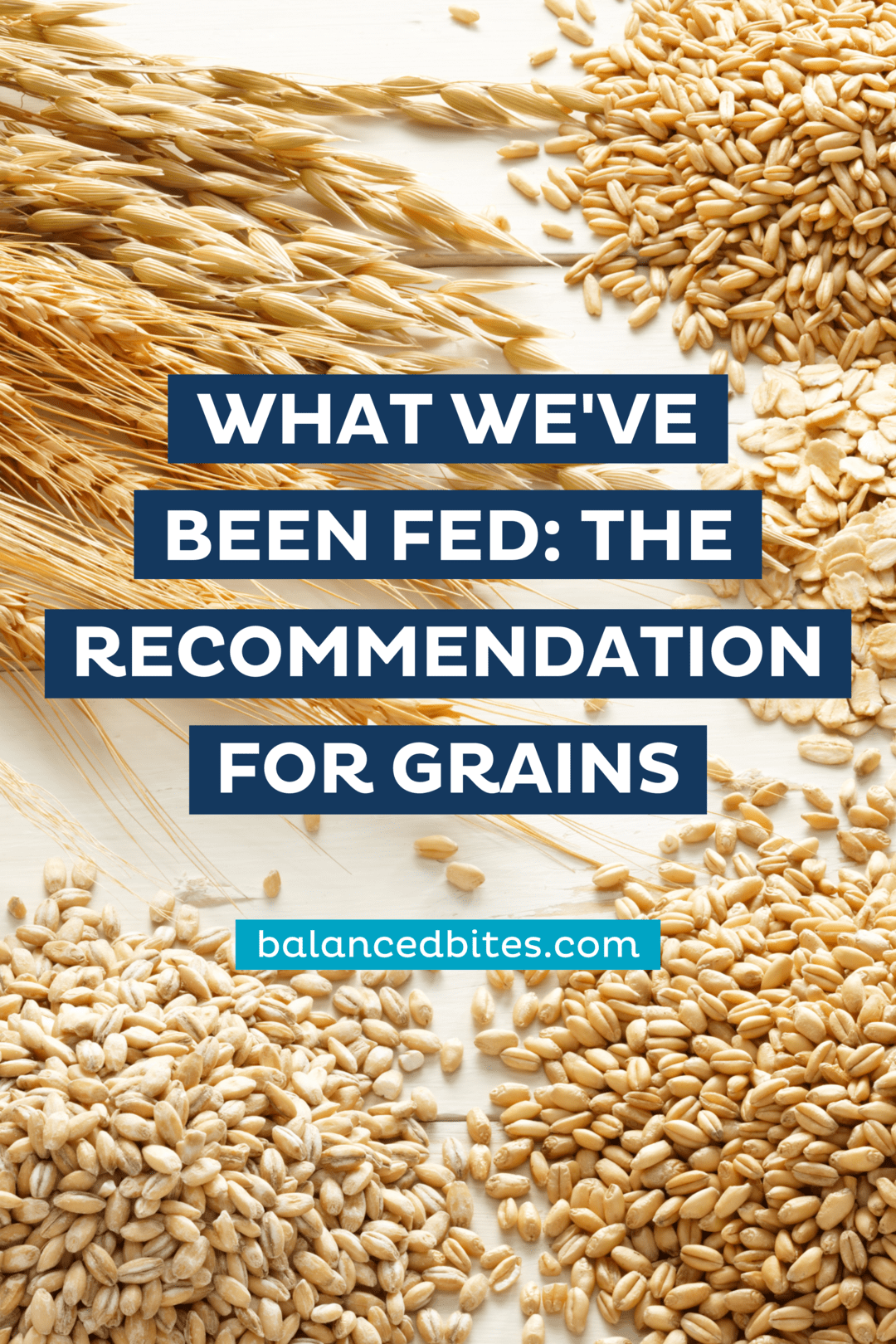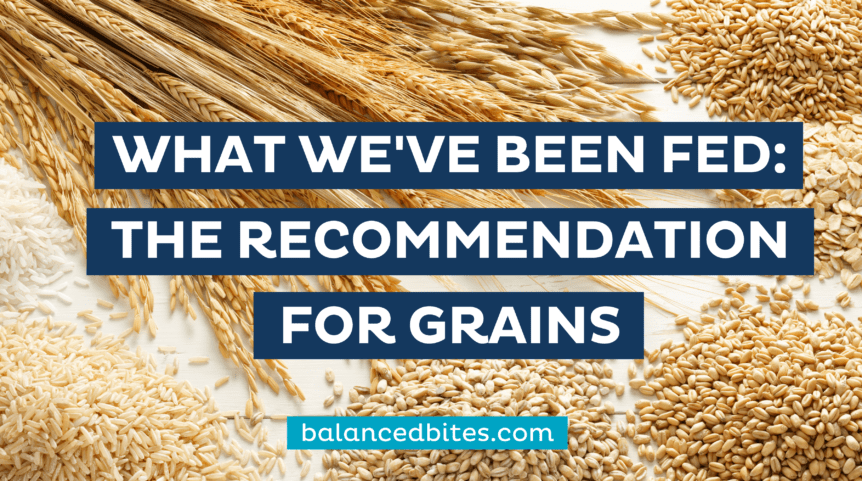In this series, I'm sharing some excerpts from my book, “Practical Paleo” with you.
You may or may not choose to follow a paleo style of eating, it isn't required to be healthy. But, many of you have told me you've benefitted from eating paleo for a short or long period of time, so these posts will explain more of the premise behind paleo eating for those curious.
Further, while I don't currently educate publicly about the paleo diet, you can always read a lot more and get over 100 easy paleo recipes in “Practical Paleo.”
Here's what the USDA has to say about grains in our diet…
“A healthy eating pattern includes grains, at least half of which are whole grains.”
When most people replace “refined” grains with “whole” grains, how do you think this translates on the plate? Do you think it means they begin eating bulgur wheat and wheat berries instead of white bread, cereal, and pasta? (Not that I regard either bulgur or wheat berries as healthy, but they are more “whole” than standard supermarket fare.) No, it simply means that people read packages of bread, cereal, and pasta for those shiny, happy words, “whole grain.” They buy the same brands, just the versions with a different label. Nobody in the food production industry loses money, and nothing on the business end changes. Only now people think that the bread they’re buying is healthy, and they can’t wait to tell their doctor, neighbors, and friends that they’ve switched to whole-grain bread.
As nutritionist Radhia Gleis says, “If it’s popped, puffed, flaked, floured, shredded, or instant, it’s refined.” This includes gluten-free rolls, gluten-free oats, whole-and sprouted-grain breads, quinoa pasta, puffed cereals, and corn chips, to name a few. They are no longer in their natural state, no matter how “whole” the grains may have been before the factory got hold of them.
Know this: Whole-grain products are still refined foods.
 Whole-grain foods simply include more parts of the grain than are found in foods like white bread, standard cereal, or pasta. They’re all still refined, and refined foods will never promote health more than whole foods, not even if the word “whole” is tacked onto them.
Whole-grain foods simply include more parts of the grain than are found in foods like white bread, standard cereal, or pasta. They’re all still refined, and refined foods will never promote health more than whole foods, not even if the word “whole” is tacked onto them.
Consumption of grains in particular—even so-called whole grains—causes a host of problems for many people (I discuss the whys and hows in great detail in the chapter on autoimmunity in Practical Paleo). For now, it is worth noting that the basis for the USDA recommendation to eat whole grains is supported by what is termed “moderate evidence,” which the USDA says “reflects somewhat less evidence or less consistent evidence. The body of evidence may include studies of weaker design and/or some inconsistency in results. The studies may be susceptible to some bias, but not enough to invalidate the results, or the body of evidence may not be as generalizable to the population of interest.”
In other words, the science on which they base their claims is not entirely sound, nor can it be completely trusted. And they know it.
If you missed the intro to this series, you can find it here.
Stay tuned for The Recommendation for Legumes coming next week as well as my follow-up posts with my own recommendations.



Comments 2
Pingback: Everything We’ve Been Taught About Good Nutrition Is Wrong | Balanced Bites | Squeaky clean heat-and-eat meals | Organic Spices | Created by Diane Sanfilippo
Pingback: What We've Been Fed: The Recommendation for Dairy | Balanced Bites | Squeaky clean heat-and-eat meals | Organic Spices | Created by Diane Sanfilippo